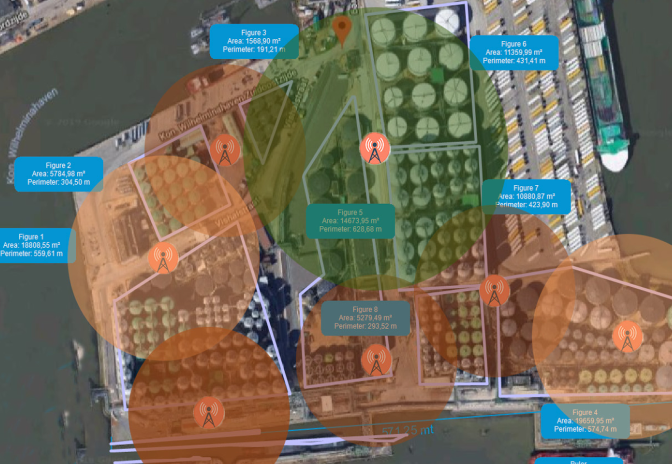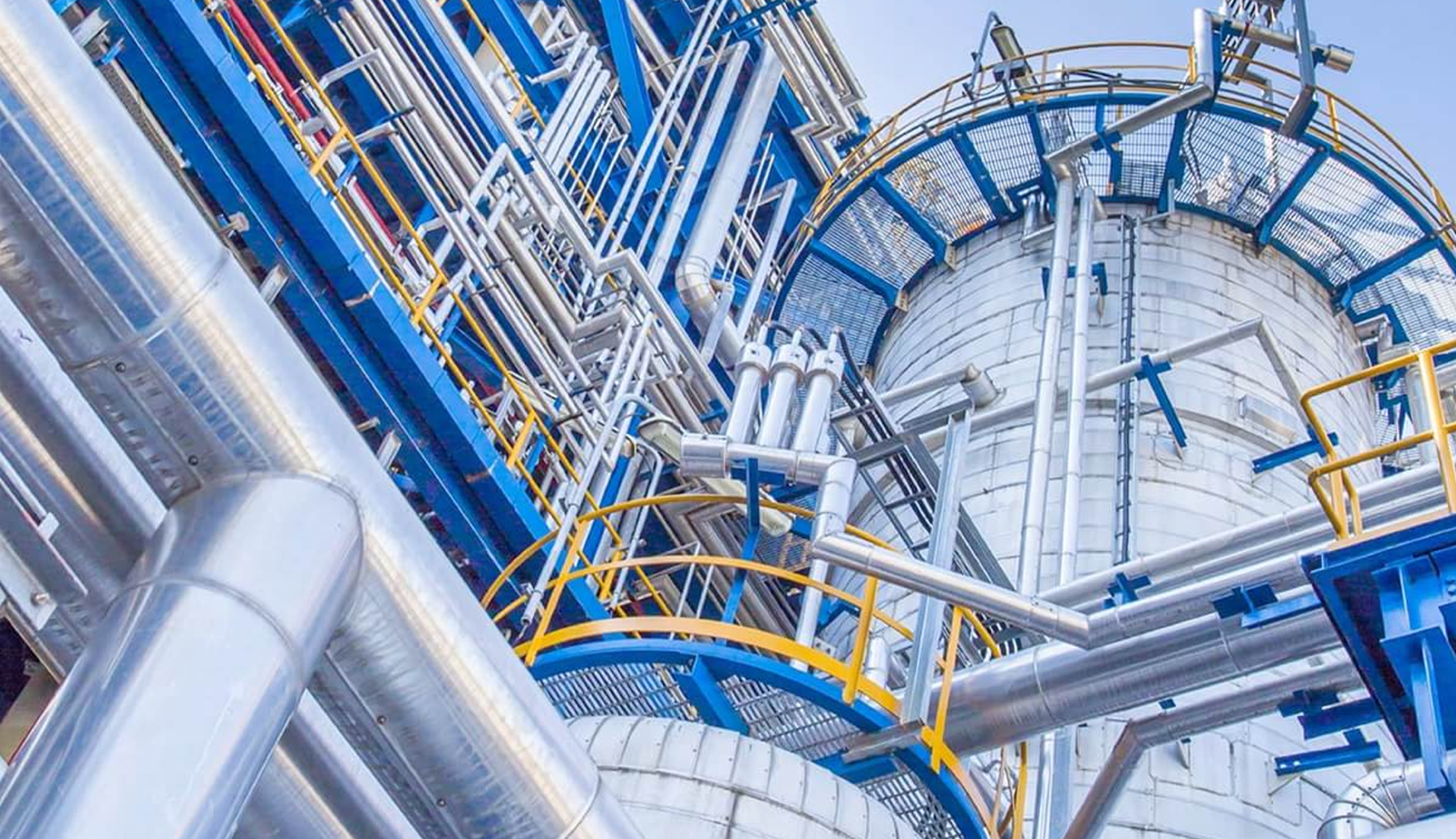Why LoRaWAN Is The Industrial I-IoT Enabler You Can’t Ignore
In this article TWTG covers the basic questions clients ask when first starting with LoRaWAN, exploring the five key areas engineers need to assess when evaluating wireless technologies for their future roadmap. As well as considering the advantages of LoRaWAN, we discuss the benefits of combining technologies to achieve the most comprehensive and financially viable solution.
Foreword
With 12 years of experience in wireless monitoring solutions within the energy industry, we’ve witnessed some fascinating developments over the past two decades. In that time, technology has advanced startlingly, and as capability has constantly improved, prices have continually dropped.
Only a decade ago, financially, engineers could only realistically monitor their most valued assets, but now with costs reducing, it’s feasible for engineers to digitise most assets. Battery life is now incredibly long, and the restriction of power cables and networking is a thing of the past – meaning today, there is no location that cannot be digitised.
While these technological opportunities are unquestionably exciting for everyone involved, we appreciate that for many of us, it can still seem like a daunting subject. That’s why it’s always a good idea to revisit the fundamentals and ensure we understand them.
We want to look at five essential criteria when assessing how to best digitise an energy or industrial facility. In particular, we always advise customers to consider the following aspects: vendor lock-in, battery life, security, range, and competing and complementary technologies.
The Importance of No Vendor Lock-in
The advantage of having no vendor lock-in is often overlooked, but it can provide complete autonomy over your system, sensors, and data. With no lock-in, you have the freedom to choose the devices that operate on your system, ensuring that your data-driven goals are not compromised. Moreover, you have the flexibility to work with any supplier you choose based on the best solution for your system.

“We always advise customers to consider the following aspects: vendor lock-in, battery life, security, range, and competing and complementary technologies.”
LoRaWAN’s open ideology is another critical differentiator, allowing any LoRaWAN device to be incorporated into a network, regardless of the supplier, manufacturer, or purpose. This means that you are not restricted by the level of certification of the device, and communication with any LoRaWAN thirdparty device is possible. Further enhancing LoRaWAN’s no lock-in credentials, its wireless nature means no hard wiring and, crucially, no manufacturerspecific plugs for connectivity.
One thing to remember is that many protocols are described as “open,” meaning that they’re free for any manufacturer. However, most of these solutions were designed to work with only the manufacturer’s products. So, if you want to incorporate third-party assets and functionality into your setup, it can be challenging and often come with limitations or restrictions.
LoRaWAN’s lack of vendor lock-in is a huge benefit, providing endless expansion possibilities. With just one LoRaWAN network, your IoT strategy can be supported for years to come, with tens of thousands of sensors monitoring all possible variables in your plant infrastructure.
Device Life Batteries
LoRaWAN technology is an excellent solution for most industrial IoT applications due to its long battery life, easy installation, and low maintenance costs.
Long battery life means that LoRaWAN can be installed without any network or power cables, making them ideal for retrofitting to existing equipment. This also gives engineers the freedom to quickly relocate devices after initial installation if they need to fine-tune the location or re-assign the device to another asset. Additionally, the lack of power or network cables means that LoRaWAN devices can easily be fitted to devices in hard-to-reach places or installed up to a couple of kilometres from the nearest LoRaWAN gateway.
However, to keep battery usage at a minimum, LoRaWAN utilises star topology and unidirectional communication, which for 24/7 monitoring, has some severe implications – mainly devices and gateways are not permanently in contact and accordingly cannot receive instructions.
LoRAWAN works this way because otherwise, the device would waste much energy in standby mode. Still, reassuringly, because it is the sensor that initiates communication, there are no delays when it comes to alerts or trigger messages.
The battery life of LoRaWAN devices hinges on the frequency of messages. Accordingly, that frequency depends on the specific application’s need – maybe an irregular alert when something is on or off, a pump that communicates every 15 minutes with regular usage parameters or a steam trap that sends a signal once a week about its status.
Solutions that need remote actuation are inappropriate for LoRaWAN applications; in this case, we suggest employing an alternative monitoring solution such as WirelessHART. However, and this is the rub, this type of monitoring is costly and would not be financially viable for the remaining 99% of non-critical assets. These, however, can be monitored via LoRaWAN, and the resulting data from both solutions can be combined into a single DCS to achieve a complete data overview. The key is carefully considering the strengths and weaknesses of both solutions and ensuring that you match the most appropriate and viable technology to the application’s specific needs.

Keeping Devices Secure
LoRaWAN is a highly secure network that takes extensive measures to protect against cyber attacks. It employs device authentication, network and session keys, frame counters, and payload encryption and decryption to ensure data security. The LoRaWAN specification includes built-in security features such as session keys, frame counters, and MIC codes, which guarantee the authenticity, confidentiality, and integrity of communication.
While LoRAWAN security is robust, we always advocate best practices, such as secure device provisioning, strong passwords, and regular firmware updates, as these are essential to enhance network and device security further.
So, with its solid security framework, LoRaWAN ensures the confidentiality and integrity of sensitive data transmitted over its networks. Furthermore, users of LoRaWAN can enjoy peace of mind knowing the LoRa Alliance is dedicated to continually updating the LoRaWAN specification to improve security and address any known vulnerabilities.
LoRa Literally Means Long-Range
Very long, actually. In 2019, LoRaWAN set a world record for successful data transmission by covering an incredible 766 kilometres between gateways.
Practically – industrial LoRaWAN sensors must comply with regulations and certifications limiting their output power, resulting in a shorter range than regular LoRaWAN sensors. But these regulations still enable certified LoRaWAN to operate at exceptional distances, especially compared to competing solutions. Even within the most controlled environment, communication between gateways and devices can be up to several kilometres.
LoRaWAN achieves its long-range capability by utilising LPWA technology allowing devices to communicate over a greater distance while consuming less power. It operates in the sub-gigahertz frequency band, which has better propagation characteristics than higher frequency bands. LoRaWAN combines this advantage with a proprietary modulation technology called Chirp Spread Spectrum (CSS), which extends its range and makes it less susceptible to Figure 4. LoRaWAN can optimise the trade-off between long-range and battery life interference and radio noise. Furthermore, by using directional antennas and adjusting transmission power, interference can be mitigated and signal quality can be consistent.
Another LoRaWAN capability, Spreading Factor (SF), is a parameter that affects both range and data rate. LoRaWAN optimises the trade-off between long-range and battery life by automatically adjusting the spreading factor.
So when helping plan a LoRaWAN rollout, we always advise engineers to consider the number of sensors, the spreading factor, and the proximity of gateways to ensure adequate coverage and connectivity. This way, LoRaWAN can be optimally used to achieve the desired results.
Weighing Up Technologies
WirelessHART is a technology that, along with LoRaWAN, has proven adaptable and robust enough to meet the rigorous demands of the oil and gas environment.
But, while WirelessHART has been around for far longer than LoRaWAN and offers more advanced security features, communication with low data and low-power consumption. LoRaWAN requires a far simpler infrastructure than WirelessHART and is more cost-effective due to its lower device cost and much longer range.

Yet, as discussed, WirelessHART or a specialist solution may be the best choice for particular specific industrial application requirements.
The reality is that each of these proven technologies has its own pros and cons. Still, interestingly, the crossover in use cases is minimal, meaning that these two competing technologies complement each other very well. So, combining LoRaWAN and a second technology, such as WirelessHART, can actually help create the perfect digital solution, providing a facility with the ultimate breadth of insight and maximum integrity but for an acceptable price.
About TWTG
TWTG is I-IoT. TWTG is the market leader in Industrialised (IECEx / ATEX) LoRaWAN® sensors. Launched in 2012, the company has become known for its green NEON LoRaWAN® products that solve industrial use cases. These wireless, battery-powered sensors revolutionise how industrial sites implement their digitalisation strategy.
Based in Rotterdam, the Netherlands (HQ) and Houston, US – As specialists in building IECEx / ATEX certified solutions for complex markets such as the oil and gas, petrochemical and utility sectors, TWTG’s devices contribute to greater accountability and environmental responsibility, while making facilities safer and increasingly efficient.
Keen to know more? Please contact us.
